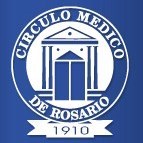Acrocallosal syndrome associated with diabetes and short stature: purpose of a case
Keywords:
acrocallosal syndrome, short stature, growth hormone, diabetes, syndactylyAbstract
Introduction: acrocallosal syndrome is an extremely rare pathology caused by a genetic alteration. The main characteristics are: severe mental retardation, agenesis of the corpus callosum, polydactyly, hypertelorism and a prominent wide forehead. Neonatal respiratory distress and intercurrent infections are the main cause of mortality.
Clinical case: male patient born at term to non-blood-related parents. His height was 45 cm and his weight was 3,390 kg. On clinical evaluation he presented: syndactyly in hands and feet, bilateral foot valgus, wide forehead, short neck and bilateral cryptorchidism. Neonatal screening was normal. During his evolution he showed delay in the acquisition of neurodevelopmental patterns. At 15 months he was hospitalized due to a febrile seizure caused by bronchitis. A cranial MRI was performed, which showed a marked thinning of the corpus callosum without sellar alterations.
The patient is evaluated by Endocrinology due to short stature and laboratory tests with altered fasting blood glucose. Given the suspicion of a congenital syndrome, consultation was requested with the Medical Genetics Service, which identified a heterozygous deletion from exon 2 to exon 15 of the GLI3 gene compatible with “acrocallosal syndrome.”
The hormonal axes were always normal except for the somatotrophic axis where he presented a low level of IGF 1 and an arginine test stimulation without achieving growth hormone, thus diagnosing its deficiency.
The glycemic profiles worsened until a diagnosis of diabetes was reached, so it was decided not to begin replacement treatment with recombinant somatotropin due to its insulin desensitizing effect.
Conclusion: our patient had a diagnosis of acrocallosal syndrome, a pathology that is extremely rare. There are some characteristics that coincide with previous literature, such as epilepsy, cryptorchidism, and respiratory infections. What differs is the relationship with the consanguinity of the parents (they are not related).
Diabetes was diagnosed possibly in relation to the mutation present in the GLI3 gene since it is described as a regulatory element of carbohydrate metabolism. In addition, he presented isolated idiopathic growth hormone deficiency, but he had not yet started growth hormone due to his alteration of carbohydrate metabolism.
It is considered important to deepen future research on the relationship of acrocallosal syndrome with diabetes and somatotropin deficiency.
Downloads
Published
How to Cite
Issue
Section
License
Copyright (c) 2024 Javier Chiarpenello, Agustín Fresco

This work is licensed under a Creative Commons Attribution-ShareAlike 4.0 International License.
Licencia Atribución-CompartirIgual 4.0 Internacional (CC BY-SA 4.0)
https://creativecommons.org/licenses/by-sa/4.0/deed.es






